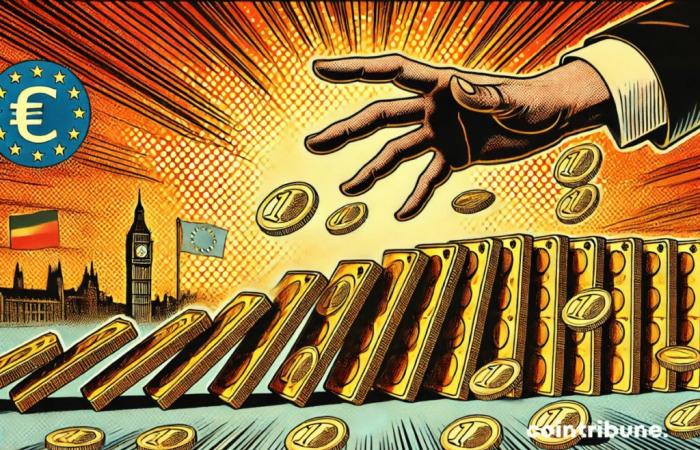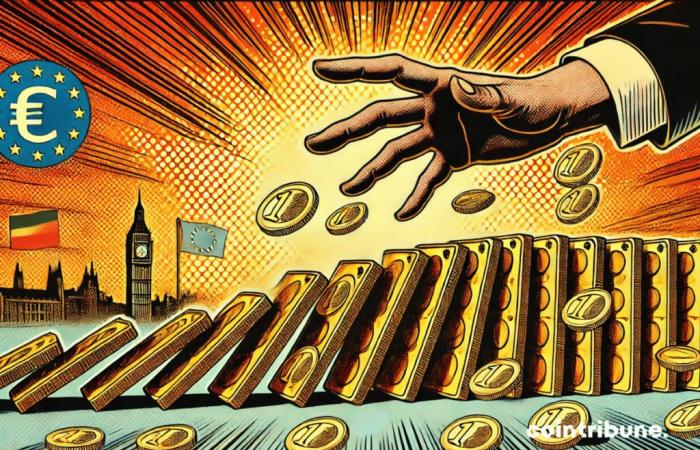16h00 ▪
5
min reading ▪ by
Luc Jose A.
The currency market has experienced particularly marked turbulence in recent days, as the dollar continues to show spectacular strength against the euro. So much so that some analysts anticipate a critical threshold: parity between the two currencies. This dynamic, which constitutes a two-year high, is of concern to economists, businesses and investors, with potential repercussions on the European and global economy.
For several months, the dollar has been inexorably strengthening against the euro, reaching levels that many did not see coming. On November 22, 2024, the euro fell to its lowest level in two years. It traded for $1.0419. This trend is largely explained by the monetary policy of the US Federal Reserve, which has maintained high interest rates in order to combat inflation. Investors, attracted by more lucrative returns on dollar-denominated bonds and assets, continue to favor the U.S. currency. Thus, the President of the Fed, Jerome Powell, has also confirmed that this policy of raising rates could continue, which would thus strengthen the position of the dollar on world markets.
Furthermore, recent economic figures, such as consumer price indices and growth rates, show that the US economy remains relatively robust, even in the face of an uncertain global context. This economic solidity contrasts sharply with the difficulties encountered by the euro zone, where inflation remains high and growth stagnates. Such factors combined have contributed to a continued erosion in the value of the euro against a more resilient dollar supported by Fed policy.
The repercussions for the European economy
The depreciation of the euro is not without consequences for the euro zone economy. First, a weaker currency makes imports more expensive, especially for raw materials, which are often priced in dollars. This could lead to higher production costs for many European companies, particularly in the energy and industrial sectors. In addition, as several observers point out, this situation could also affect the purchasing power of consumers, with higher prices for consumer goods.
European companies are not the only ones to suffer from this weakness of the euro. Such a depreciation of the European currency could also complicate the management of external debt for certain euro zone countries. Those with dollar-denominated loans risk seeing their repayment obligations increase, thereby amplifying financial stress. On the other hand, the decline of the euro could provide an advantage to European exporters, who will see their products become more competitive on global markets. However, this beneficial effect is limited by the fact that many sectors already face higher operating costs.
Ultimately, although some sectors may benefit from euro depreciation through strengthened exports, the negative consequences for the eurozone economy are likely to be profound and long-lasting. Slowing growth, rising prices and complex public debt management could weigh heavily on long-term economic stability. However, the outlook remains uncertain, and the reaction of European monetary authorities will be crucial in the coming months to limit the damage.
Maximize your Cointribune experience with our 'Read to Earn' program! For every article you read, earn points and access exclusive rewards. Sign up now and start earning benefits.
Luc Jose A.
A graduate of Sciences Po Toulouse and holder of a blockchain consultant certification issued by Alyra, I joined the Cointribune adventure in 2019. Convinced of the potential of blockchain to transform many sectors of the economy, I took the commitment to raise awareness and inform the general public about this constantly evolving ecosystem. My goal is to enable everyone to better understand blockchain and seize the opportunities it offers. I strive every day to provide an objective analysis of current events, to decipher market trends, to relay the latest technological innovations and to put into perspective the economic and societal issues of this ongoing revolution.







